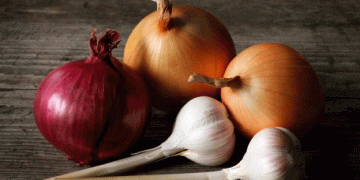For many gardeners and farmers, the idea of planting onions and garlic together may seem logical. Both crops belong to the Allium family and share similarities in growth habits and soil preferences. However, despite this familial connection, placing them side by side is a mistake that can lead to decreased yields and increased disease pressure. Let’s examine the main reasons why separating these crops is a better practice for any farm or garden.
Competition for Resources
One of the primary reasons onions and garlic should not be grown together is their competition for essential nutrients and water. Both crops have shallow, fibrous root systems that primarily draw nutrients and moisture from the upper layers of the soil. When planted close to each other, onions and garlic vie for these limited resources, leading to suboptimal growth for both.
Agricultural studies have shown that nutrient competition is particularly problematic in soils with low organic matter or poor fertility. In such conditions, the stress on crops is even more pronounced, resulting in smaller bulbs and lower overall productivity. Ensuring that each plant has access to ample soil nutrients is crucial for maximizing yield, and this is best achieved by keeping onions and garlic in separate beds.
Different Watering Needs
While onions and garlic may look similar above ground, they have distinct irrigation requirements. Garlic generally requires more frequent and generous watering, especially during the early stages of growth and bulb formation. Onions, on the other hand, are more prone to rot and need a more controlled watering schedule, particularly as they approach maturity.
A uniform watering regime will inevitably favor one crop over the other. Overwatering onions can cause bulb rot, while underwatering garlic can stunt its development and lead to smaller, less flavorful cloves. By planting these crops separately, farmers and gardeners can tailor irrigation practices to meet the specific needs of each crop, promoting healthier growth and minimizing water stress.
Shared Susceptibility to Diseases
Another significant challenge of planting onions and garlic together is their susceptibility to similar diseases. Both crops can be affected by fungal infections such as white rot (Sclerotium cepivorum) and downy mildew (Peronospora destructor). Planting them in close proximity increases the likelihood of disease transmission, as pathogens can easily spread from one plant to another.
Disease outbreaks not only reduce yield but also compromise the quality of the harvested bulbs. Moreover, these diseases can persist in the soil for several years, making it challenging to grow any Allium crops in the affected area. Rotating crops and keeping onions and garlic separate are essential strategies for disease management and long-term soil health.
While onions and garlic may seem like natural companions, planting them together is a recipe for trouble. Their competition for nutrients and water, coupled with differing irrigation needs and susceptibility to common diseases, make separation a far better approach. By allocating separate garden beds or plots for each crop, you can ensure they thrive and produce bountiful, high-quality harvests.

































